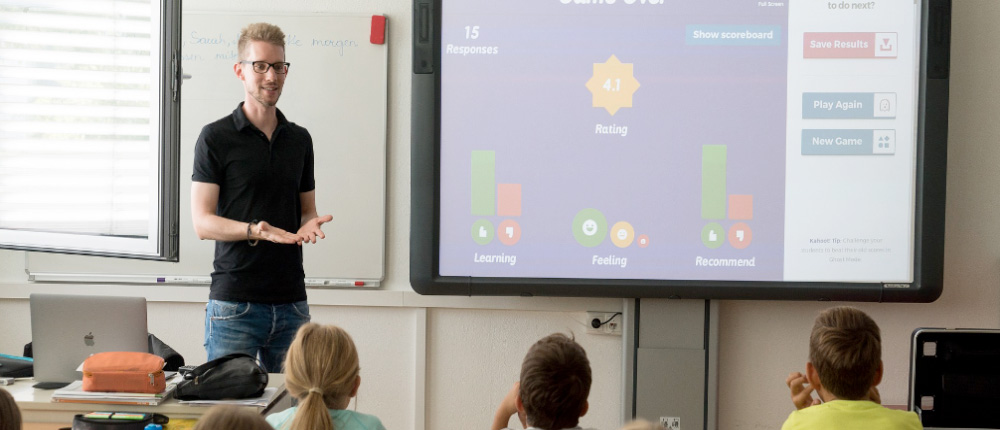Strong Executive Function Skills Improve Learning and Decision-Making

Every teacher wishes their students would consistently make choices that contribute to the learning and wellbeing of everyone in the classroom. For example, instead of compounding the distraction of a classmate goofing off in the hall, students would get back to work quickly. Instead of having outbursts about low grades on assignments, students would note some questions to discuss after class. Instead of drifting off into daydreams when difficult concepts are introduced in a lesson, students would ask for further explanations. Instead of chatting with neighbors when instructions are being given, students would take notes on procedures and due dates. Teachers can feel frustrated when they repeatedly remind students about appropriate behaviors but don’t see any improvements. These kinds of challenges in the academic environment have motivated the nonprofit BrainFutures to work to improve our understanding of brain fitness, which develops when we engage in activities that prime our brains for learning and increase our ability to regulate our emotions. BrainFutures, the first national organization to develop a rubric that assesses the quality of school-based brain fitness interventions, advocates for every school to adopt a program that strengthens students’ executive functioning (EF).
What is executive functioning? How does it relate to decision making?
BrainFutures’ recent report Brain Fitness and Executive Function: Evidence-Based Interventions That Improve Student Outcomes explains that EF is the higher-order neural processing in the brain that takes place in the prefrontal cortex. EF skills are crucial to learning, planning, reasoning, problem-solving, goal-directed action, and self-motivation and “are more accurate predictors of academic readiness and life success than IQ or any other performance marker.” Karen Alexander, BrainFutures’ Program Director noted, “Scientific understanding of the brain has changed in recent years: we now know that the brain is highly malleable and continues to grow and change throughout our lives, so it is never too late to strengthen these key cognitive abilities. This means that high school students can benefit from effective interventions, which is why we are advocating for EF programming in all K-12 environments.”
Alexander explained the importance of strengthening three foundational EF skills to help students become better decision makers: working memory, cognitive flexibility, and inhibitory control. Working memory is the skill of holding attention on a concept or task long enough to complete an association or generate a conclusion or new thought. It is critical for any task that requires making sense of anything that unfolds over time and for considering alternative solutions to a problem. Cognitive flexibility is the skill of shifting from one mind state or task to another. It helps students examine a decision from multiple perspectives, reorganize priorities as needed, and think more creatively about possible outcomes. Inhibitory control is the skill needed to control one’s attention, behavior, and emotions. It helps students “focus and stay on task despite distractions, which can help them select a course of action and follow through,” Alexander said.
What can teachers do to support students’ executive functioning?
A rigorous curriculum taught by well-trained teachers isn’t enough on its own to strengthen students’ EF skills. “Children cannot be expected to effectively absorb academic content if they are unable to learn, think, and focus,” Alexander said. “Strengthening EF skills equips students with a cognitive toolkit that enables them to approach any academic content or social-emotional challenge with greater adeptness. The more rigorous the curriculum, the greater the need for students to have strong EF skills before embarking on the course of study.” She added that studies have shown that children with stronger EF skills engage more effectively with classroom learning activities and have higher reading and math achievement in elementary school than those with weaker skills.
Teachers can take simple steps to support students’ EF in the classroom every day. Alexander said students benefit when teachers reinforce time management and planning strategies like following an agenda posted in the classroom, breaking larger projects into manageable pieces, and using graphic organizers. She also recommends creating opportunities for students to review previous learning and act on feedback as soon as possible. Additionally, breaks throughout the day to do guided breathing activities can help students get ready to learn and remain calm and focused as they approach the multitude of choices they face on any given day.
What can schools do to make executive function skills a priority?
Teachers and administrators who are eager to extend students’ EF and overall brain fitness should consult the “School-Based Executive Function Program Guide” section within BrainFutures’ report for reliable information that will help them understand what they can expect from an intervention. “Schools are inundated with marketing about a wide range of products that claim to impact student learning, but often there is no scientific evidence to justify those claims,” Alexander explained, which is why BrainFutures worked with an advisory board comprised of neuroscientists, psychologists, educators, and other stakeholders to develop a rubric to classify the most promising EF programs. “We developed our rubric to help administrators and educators understand how to examine the evidence base of any product and weigh the relative importance of factors that impact implementation,” she said.

BrainFutures purposefully profiled programs that can be implemented in the classroom and are appropriate for all students. “The classroom-based delivery model is especially useful as all students benefit from the intervention without needing to first assess each student,” Alexander said. Programs profiled in the report include EF-specific training, mindfulness, Social and Emotional Learning, neurofeedback (any reflective activity or technology that provides external feedback about brain activity to the participant in a skill-building context), and brain literacy (becoming familiar with the names of the different parts of the brain, how they function, and how they work together to create ideal conditions for learning).
The guide profiles ten programs that met all the criteria on BrainFutures’ rubric, which included significant increases in proficiency on state-mandated tests for math and reading, improvements in school-administered tests of core subjects, reductions in disruptive classroom behaviors, and increases in prosocial behaviors. Two mindfulness programs for middle and high school students that have been implemented in thousands of classrooms in the U.S. are included. Inner Explorer “offers simple to implement, audio-guided mindfulness programming that helps pre-K–12 students, their teachers, and families experience less stress, greater focus, and improved self-regulation.” The MindUP program from The Goldie Hawn Foundation “provides a curriculum at the intersection of neuroscience, positive psychology, mindful awareness, and SEL.” Individual educators can purchase MindUP curriculum guides that integrate mindful awareness and brain literacy into core school subjects. School leaders can schedule more in-depth training for teachers with MindUP staff.
Alexander said administrator buy-in is essential for effective implementation of any EF program. “We hope that our report will help more administrators understand that strengthening EF skills is a proven, actionable step that every school can take to support student learning,” she said. District leaders, principals, and teachers who have successfully implemented one of the programs profiled in the report recommend considering how a program will mesh with aspects of the school’s setting, demographics, and culture and doing preliminary planning to consider various timing factors. They also advise exploring grants from the U.S. Department of Education and funding opportunities affiliated with researchers. Furthermore, commitment to programs increased when they conducted pre-, mid- and post-assessment metrics that provided teachers with data about students’ cognitive strengths and deficits and demonstrated the gains achieved to other stakeholders.
When students possess strong EF skills that enable them to regulate impulsive behaviors, sustain their attention on the activities they need to complete to achieve their goals, and avoid being overwhelmed when they have to choose amongst several alternatives, they have a foundation that helps them become better decision makers. For these reasons the Alliance for Decision Education recognizes BrainFutures’ work to advocate for all K–12 schools to implement high-quality EF programs and we encourage educators to connect with them as they start planning to make decision skills a priority for their students. Schools and organizations that have already begun efforts focused on EF are also welcome to share their progress. Upon request, BrainFutures will apply its rubric to additional programs that intend to have a positive impact on students’ EF skills. For more information, contact Program Director Karen Alexander at kalexander@brainfutures.org.

